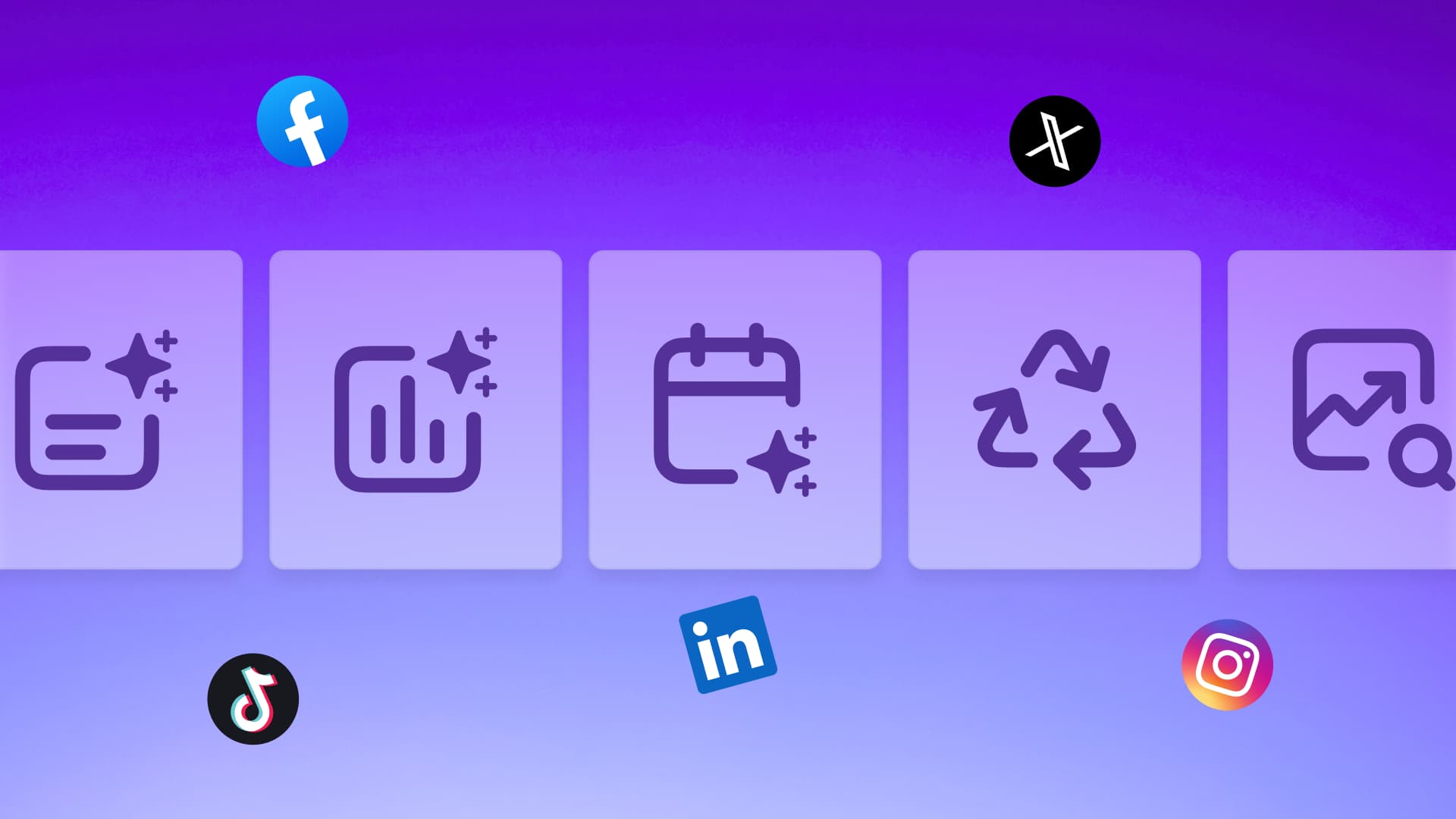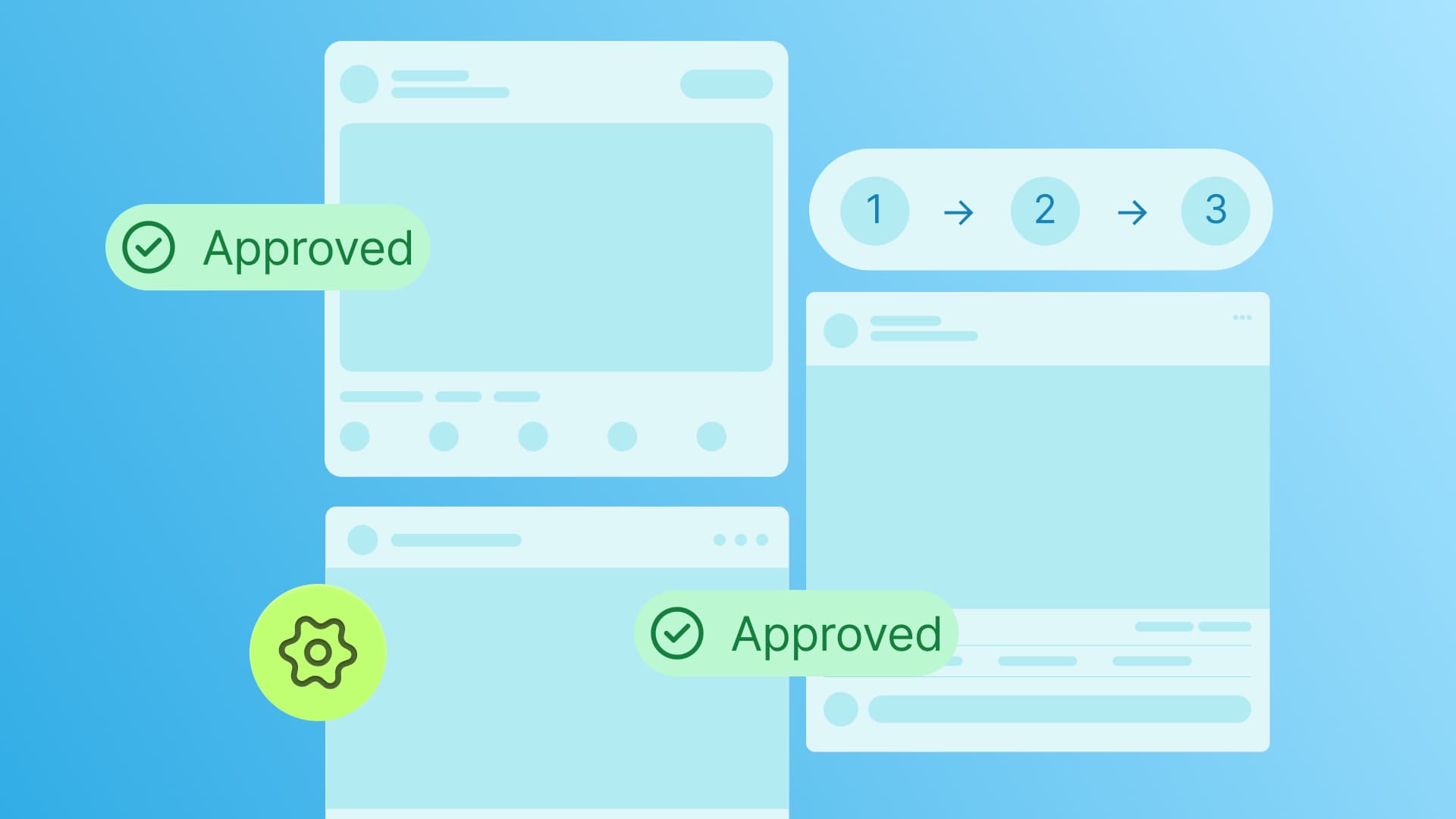New
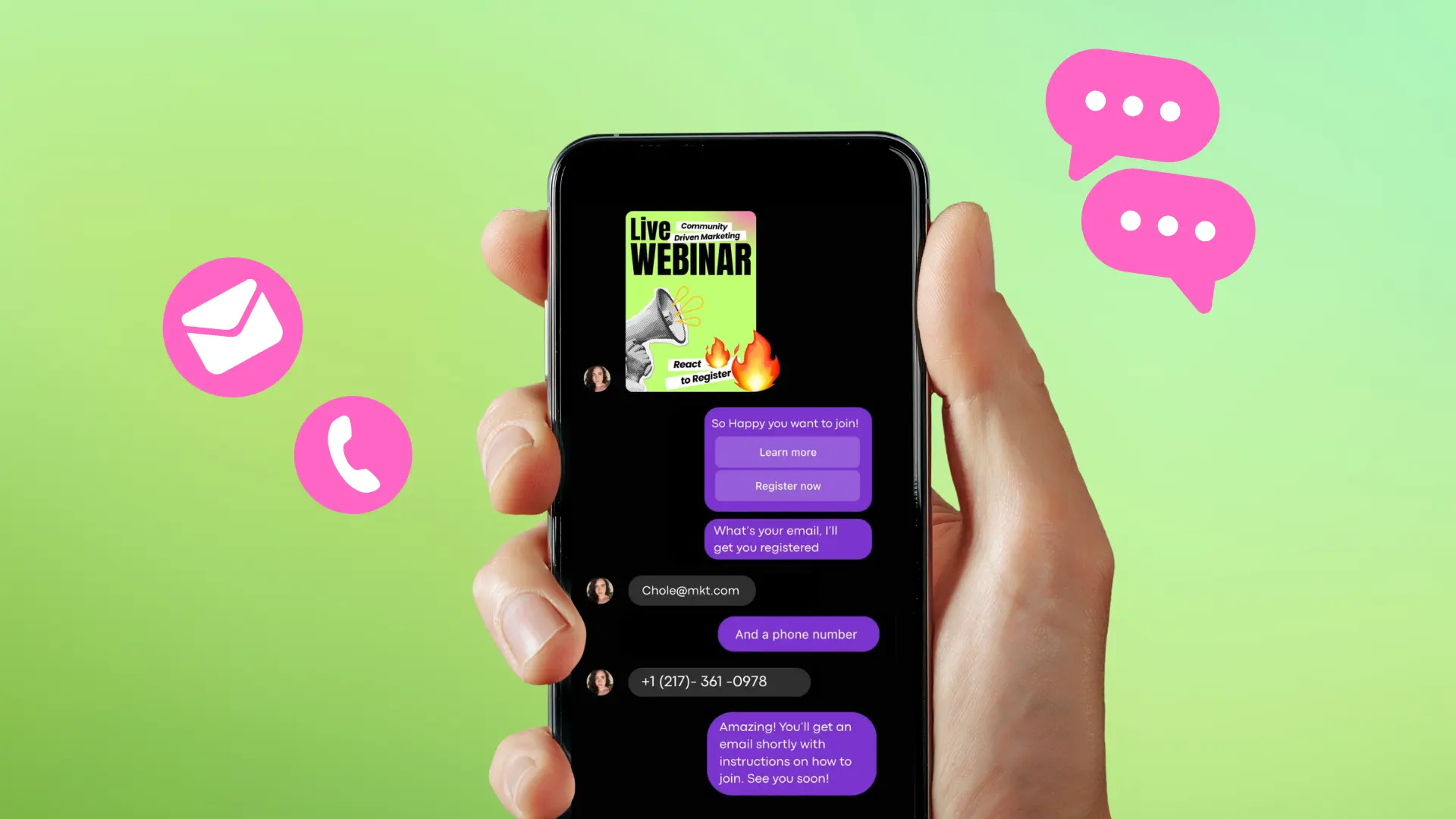
Turn Your DMs Into Lead Gen!
Learn how to collect lead data from your DMs such as email addresses, phone numbers, and more right from your social inbox. If you are not yet automating your DMs your competitors are outpacing you.
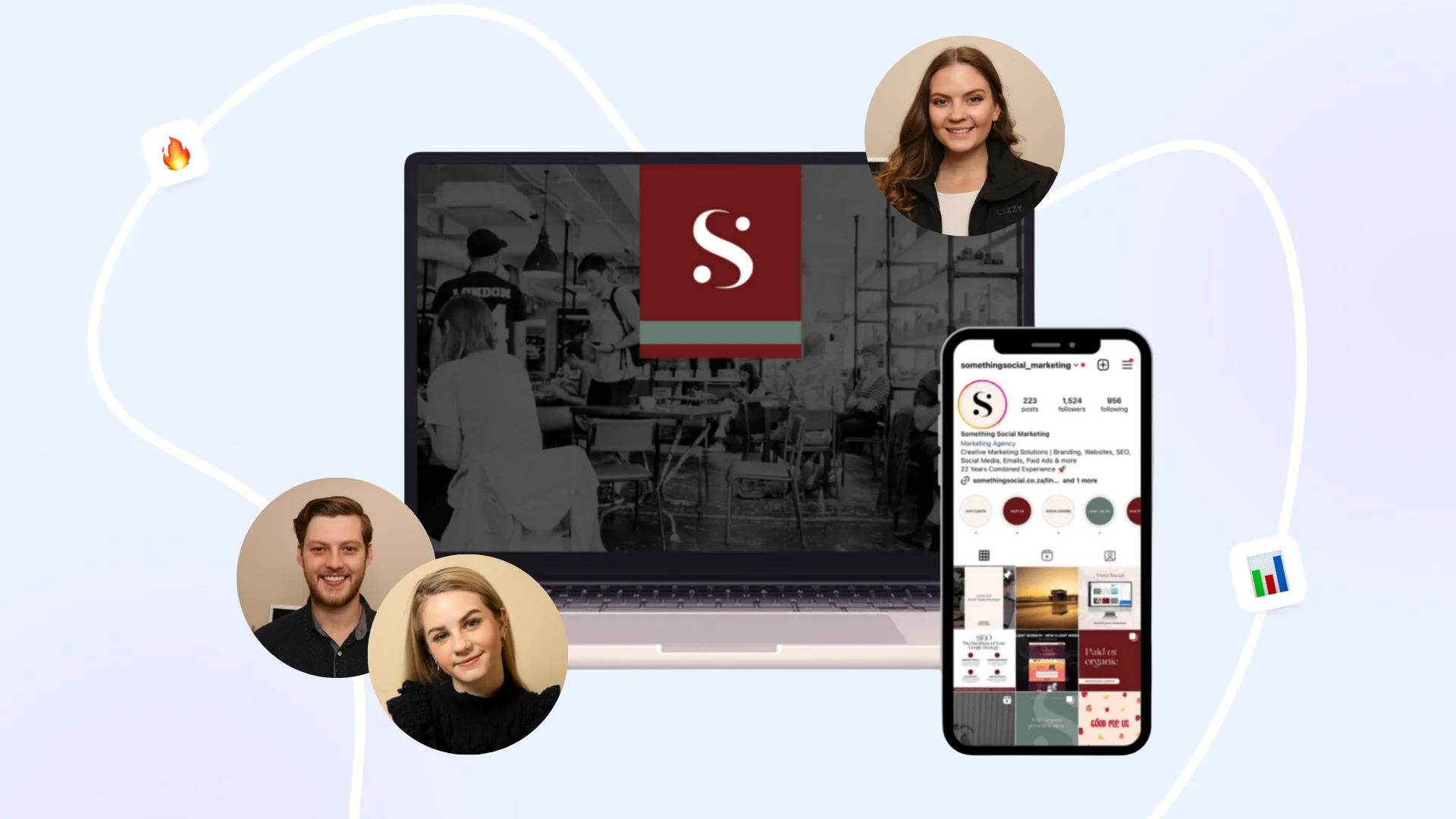
How Something Social Saved 75% of Their Time and Increased Revenue by 15%
See how a fast-growing agency improved operations, cut down hours of manual work, and unlocked new revenue opportunities with Vista Social.
New
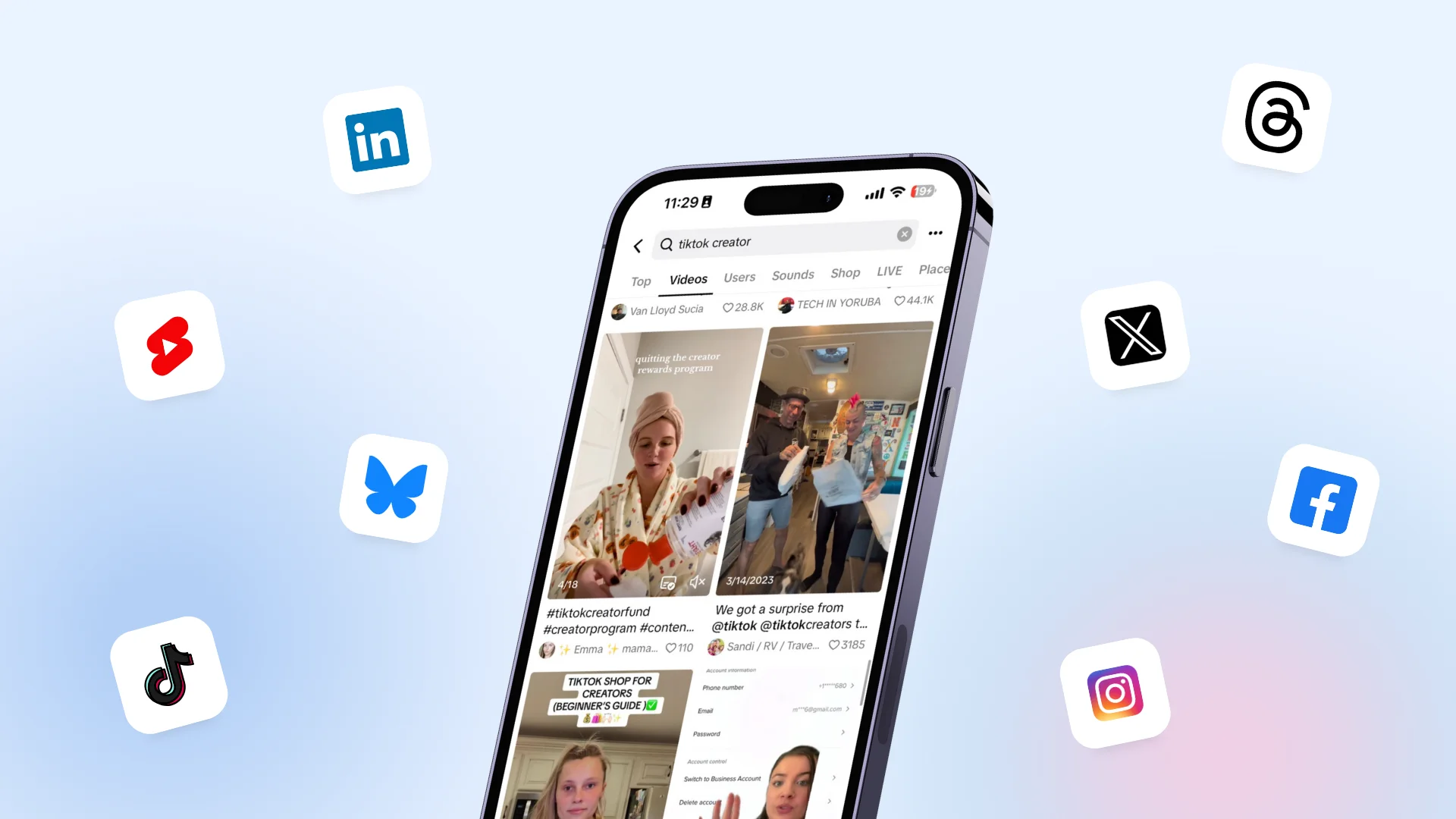
50 Unique Social Media Ideas for Consistent Content Creation
Discover 50 unique social media post ideas to engage your audience, grow your brand, and maintain a consistent content strategy with ease!
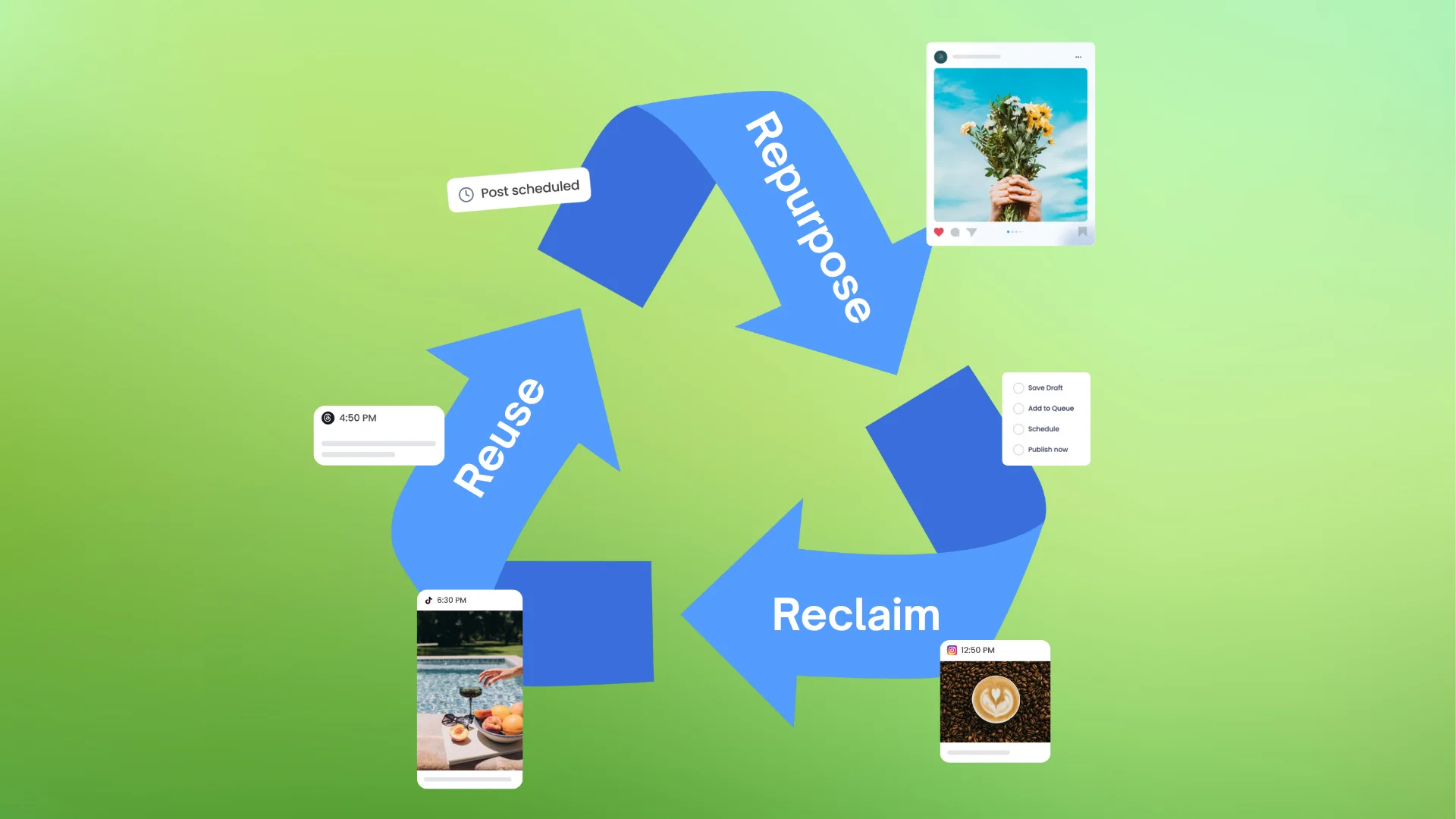
Mastering Content Reuse: The Key to a Consistent and Sustainable Posting Strategy
Published on October 2, 2025
17 min to read
How to Master Facebook Marketing: Proven Strategies That Drive Results
Summarize with AI
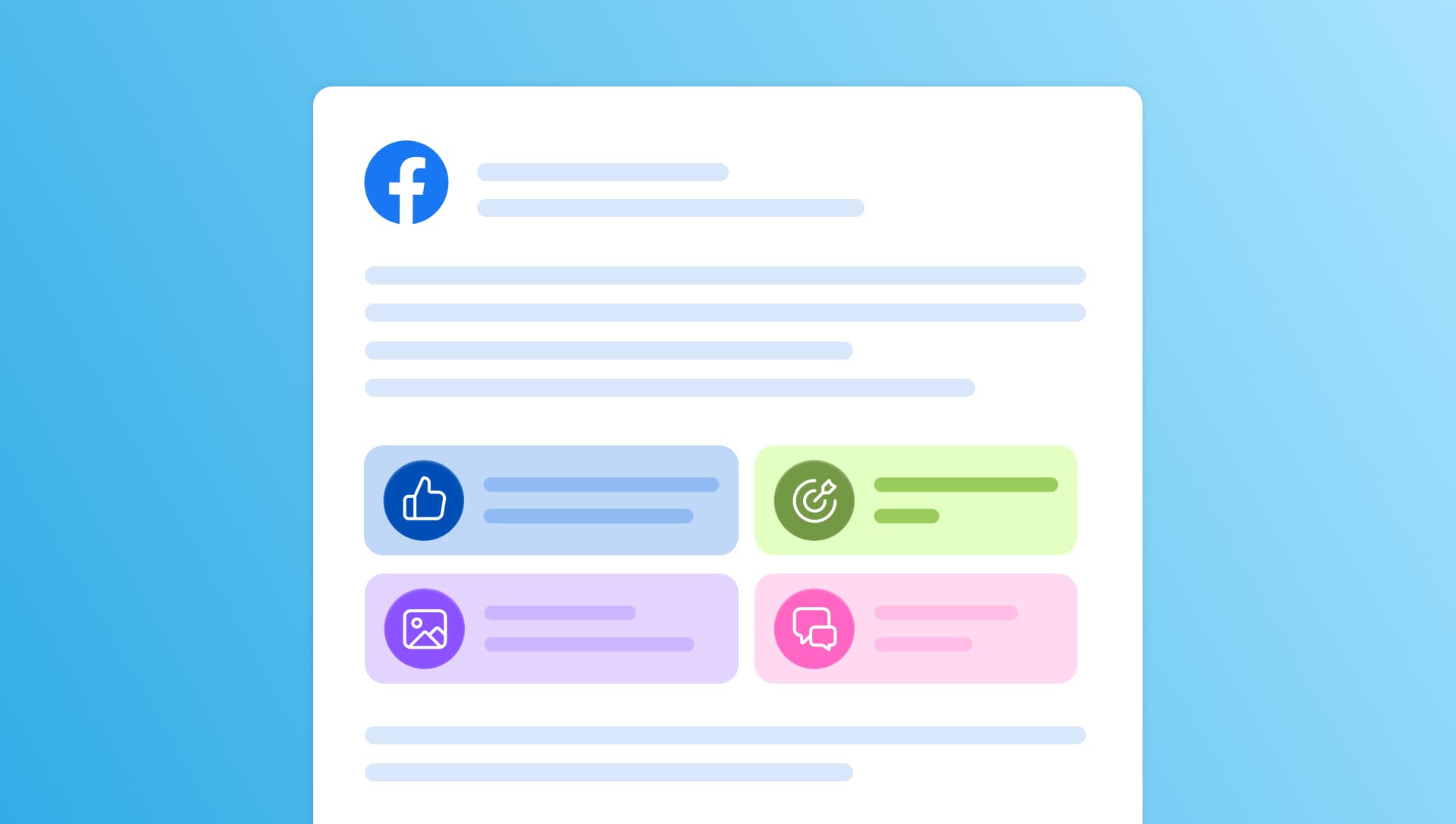
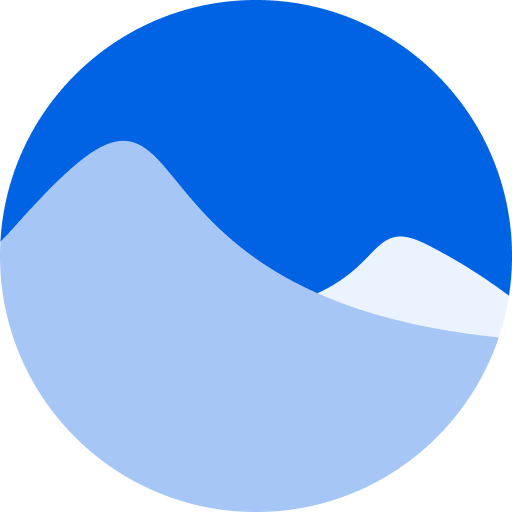
Table of Content

Remember when everyone said Facebook was dying? That younger generations were abandoning it for TikTok and Instagram? Well, the data tells a different story—and if you’ve been sleeping on Facebook marketing, you’re leaving serious money on the table.
Facebook remains the world’s largest social network with over 3 billion monthly active users. That’s not a typo—3 billion people scrolling, engaging, and making purchase decisions on Facebook every single month.
Yet many businesses still treat it like an afterthought, posting randomly and wondering why their content gets buried.
Here’s the truth: Facebook marketing in 2025 isn’t about gaming the algorithm or going viral. It’s about understanding your audience, creating valuable content, and building genuine relationships at scale.
This guide will show you exactly how to build a Facebook marketing strategy that actually drives results.
Table of contents
What is Facebook marketing?
Facebook marketing is the practice of using Facebook’s platform to promote your business, build brand awareness, and drive sales. But now, it’s evolved way beyond just posting updates to your business page and hoping people see them.
Today’s Facebook marketing strategy includes:
- Organic content and posts
- Paid advertising campaigns
- Community building through groups
- Live video streaming
- Stories and Reels
- Marketplace listings
- Sophisticated audience targeting
It’s about meeting your customers where they are and providing value that keeps them coming back.
The platform has matured into a full-funnel marketing channel.
You can attract new customers with targeted ads, nurture relationships through engaging content, build communities around your brand, provide customer service through Messenger, and close sales directly on the platform. That’s powerful.
Why is Facebook marketing important?
Let’s cut through the noise. Facebook marketing matters because your customers are there. According to Meta, more than 35 million businesses in the United States alone use Facebook and Instagram every month to grow their operations, with over 2 million of them advertising across Meta’s apps monthly.
But it’s not just about audience size. Facebook offers unmatched targeting capabilities that let you reach exactly the right people at exactly the right time.
Want to target women aged 25-34 who are interested in sustainable fashion and live within 10 miles of your store? Facebook can do that. Need to retarget website visitors who abandoned their cart? Facebook has you covered. Whether you’re:
- A local bakery
- An e-commerce store
- A global brand
- A service provider
Facebook marketing can drive measurable results for your bottom line.
How to get started with Facebook marketing
Starting your Facebook marketing journey doesn’t require a massive budget or a marketing degree. You just need the right foundation.
Let’s walk through the essential setup steps that will position you for success.
Create and optimize your Facebook business page
Your Facebook business page is your digital storefront on the platform. It’s where customers will learn about your business, engage with your content, and ultimately decide whether to buy from you. So make it count.
Start with the basics. Choose a clear profile picture—your logo works great. Add a cover photo that shows off your brand or current promotion. Fill out every section of your About page. Include your website, hours of operation, and contact information. Write a short description that explains what you do and why it matters.
Don’t skip the username. A memorable Facebook username (facebook.com/yourbrandname) makes it easier for people to find and tag you. Keep it consistent with your branding across other platforms.
Set up Facebook Pixel
Facebook Pixel is a small piece of code that you install on your website to track visitor behavior. Think of it as your eyes and ears, showing you exactly what people do after clicking your Facebook content or ads.
The Pixel shows you which Facebook campaigns lead to real website actions. This means purchases, sign-ups, or downloads. This data helps you find similar audiences or show ads to people who visited your website.
Setting it up takes about 15 minutes. Go to Events Manager in your Meta Business Suite, create your Pixel, and install the code in your website’s header. If you’re using platforms like Shopify, WordPress, or Wix, there are plugins that make this process even simpler.
Create your Facebook Ads account
Even if you’re not planning to run paid ads immediately, setting up your Facebook Ads account now saves time later. You’ll need it to access detailed analytics, run A/B tests, and eventually scale your efforts with paid promotion.
Navigate to Business Settings in your Meta Business Suite and set up your ad account. Add a payment method, define your account currency and time zone, and invite any team members who’ll be managing campaigns.
Pro tip: Sign up for Vista Social and connect your Facebook accounts through a single dashboard. Vista Social streamlines everything from content scheduling to performance tracking, saving you hours of jumping between tabs and tools.
How to create a Facebook marketing strategy
A strategy isn’t just a fancy word for “posting stuff on Facebook.” It’s a deliberate plan that aligns your Facebook efforts with your business goals. Let’s build yours step by step.
Define your Facebook marketing goals
Start with the end in mind. What do you actually want to achieve with Facebook marketing?
And be specific. “Get more customers” is too vague, but “generate 50 qualified leads per month from Facebook” is a goal you can measure and optimize toward.
Common Facebook marketing goals include:
- Increasing brand awareness
- Driving website traffic
- Generating leads
- Boosting engagement
- Building a community
- Providing customer service
- Increasing sales
Pick 2-3 primary goals to focus on—trying to do everything at once dilutes your efforts.
Make sure your goals are SMART:
- Specific: Clearly define what you want to achieve. Instead of “increase engagement,” say “increase Instagram comment rate on product posts.”
- Measurable: Include numbers so you can track progress. “Gain 500 new followers” beats “get more followers.”
- Achievable: Set realistic goals based on your current resources and performance. Don’t aim for 10,000 followers in a week if you’re starting from 100.
- Relevant: Make sure the goal actually helps your business. Growing TikTok followers doesn’t matter if your customers aren’t on TikTok.
- Time-bound: Set a deadline. “Increase page likes by 20% in Q2” gives you a clear timeframe to work within.
Get to know your target audience
You can’t market effectively to everyone, and trying to do so only wastes time and money. Instead, get crystal clear on who your ideal customer is and where they hang out on Facebook.
Check your audience insights within Meta Business Suite to research demographics, interests, behaviors, and purchasing patterns. Look at your existing customers and identify common characteristics. What problems do they face? What content do they engage with? What times are they most active?
Create detailed buyer personas that go beyond basic demographics. Give them names, backstories, motivations, and pain points. When you’re creating content, you should know exactly who you’re talking to and what they care about.
Conduct competitive research
Your competitors are probably already active on Facebook, which means you have a free masterclass at your fingertips. Study what they’re doing—not to copy them, but to identify gaps and opportunities.
Look at their posting frequency, content types, engagement rates, and ad campaigns. What posts get the most engagement? What seems to fall flat? What tone and style do they use? Use tools like Facebook’s Ad Library to see exactly what ads they’re running.
But here’s the key: you should also look for what they’re NOT doing. Maybe they’re neglecting video content, or they never respond to comments, or they’re not using Facebook groups. These gaps are your opportunities to differentiate and win.
Develop your content strategy
Content is the fuel that powers your Facebook marketing engine. Without great content, no amount of ads or optimization will save you. Your content strategy should define what you’ll share, how often you’ll post, and what voice you’ll use.
The best Facebook content right now includes short videos like Reels and quick tips. Share behind-the-scenes moments that make your brand feel human. Post content from your customers to build trust. Create educational posts that solve real problems. Use polls and questions to start conversations.
Aim for a content mix that follows the 80/20 rule: 80% valuable, entertaining, or educational content and 20% promotional content. People follow brands that add value to their feeds, not ones that constantly pitch them.
Create a content calendar that plans your posts at least two weeks in advance. This prevents the last-minute scramble and ensures you’re covering all your bases. Vista Social’s content planning tools make this process seamless, letting you visualize your content calendar, schedule posts in bulk, and maintain consistency across all your social channels.
Establish a posting schedule
Consistency matters more than frequency. It’s better to post three times per week consistently than to post daily for two weeks and then disappear for a month.
Start with 3-5 posts per week and adjust based on your audience’s response and your capacity to create quality content. Look at your Facebook Insights (or take advantage of a third-party analytics tool like Vista Social) to see when your audience is most active, then schedule your posts for those peak times.
Don’t forget about Facebook Stories—these disappearing posts are perfect for time-sensitive updates, flash sales, or casual behind-the-scenes content. Aim for 2-3 Stories per week to stay top of mind without overwhelming your audience.
Engage with your community
Facebook marketing isn’t a broadcast medium where you shout into the void. It’s a conversation. The brands that win on Facebook are the ones that actively engage with their community.
Respond to every comment on your posts, even if it’s just a quick “Thanks!” or a relevant emoji. Answer direct messages promptly. Join conversations in relevant Facebook groups. Share user-generated content and tag the creators. Show up like a real human, not a faceless corporation.
Set aside 15-30 minutes daily for community management. This investment pays dividends in loyalty, word-of-mouth marketing, and valuable customer insights.
Advanced Facebook marketing tactics
Once you’ve mastered the basics, these advanced tactics will help you scale your results and get ahead of competitors still stuck in 2020.
Master Facebook Ads
Organic reach on Facebook is limited—there’s no way around it. If you want to scale your Facebook marketing, you need to embrace paid advertising. But throwing money at Facebook Ads without a strategy is like lighting your marketing budget on fire.
Start with clear campaign objectives that align with your business goals. Facebook offers 11 different campaign objectives, from brand awareness to conversions. Choose wisely based on where your audience is in the customer journey.
Your targeting makes or breaks your ad performance. Use Facebook’s detailed targeting options to reach people based on demographics, interests, behaviors, and connections. Create custom audiences from your email list, website visitors, or Facebook engagers. Build lookalike audiences based on your best customers.
Creative is king. Your ad creative needs to stop the scroll, communicate value instantly, and include a clear call-to-action. Use eye-catching visuals, write compelling copy that speaks directly to your audience’s pain points, and test different formats like single images, carousels, and videos.
Start with a small daily budget—$10-20 is enough to test—and scale what works. Monitor your key metrics (not just vanity metrics like impressions, but real results like cost per lead or return on ad spend) and continuously optimize.
Build communities with Facebook groups
Facebook groups are the secret weapon most brands overlook. While your Facebook Page reaches whoever Facebook’s algorithm decides to show your content to, a Facebook group creates a dedicated space where your most engaged community members gather.
Create a group around a shared interest or goal, not just your brand. A running shoe company might create a group for marathon training tips. A skincare brand could host a community focused on clean beauty routines. The key is providing value beyond your products.
Post regularly, spark discussions with thoughtful questions, and moderate actively to keep the conversation quality high. Feature member success stories, host exclusive events or Q&As, and reward your most active members. A thriving Facebook group becomes a self-sustaining marketing asset that builds brand loyalty and generates word-of-mouth referrals.
Leverage Facebook Live for real-time engagement
Use Facebook Live for product launches, behind-the-scenes tours, Q&A sessions, tutorials, or event coverage. Promote your Live sessions in advance so your audience knows when to tune in. During the broadcast, acknowledge viewers by name, respond to comments in real-time, and include clear calls-to-action.
Don’t stress about perfection. The slight imperfections of live video make it feel more authentic and relatable. Just ensure good lighting, clear audio, and a stable internet connection.
Host Facebook Events
Facebook Events are powerful for both online and offline gatherings. Whether you’re hosting a webinar, workshop, sale, or in-person event, Facebook Events help you organize details, send reminders, and build excitement.
Create compelling event pages with clear descriptions, eye-catching graphics, and all necessary details. Use your Facebook page, groups, and ads to promote the event. Encourage attendees to invite friends. Post updates as the event approaches to maintain momentum.
After the event, share photos, videos, and highlights. This extends the event’s value and builds anticipation for your next one.
Cross-promote with Instagram
Facebook owns Instagram, and the integration between the two platforms creates powerful marketing opportunities. You can run ads that appear on both platforms, cross-post content, and manage both accounts from a single interface.
That said, each platform has its own culture and best practices. Don’t just duplicate the same content across both. Adapt your messaging, format, and style to fit each platform’s audience.
Use Facebook for longer-form content, detailed explanations, and community discussion. Use Instagram for visual storytelling, aspirational content, and behind-the-scenes glimpses.
Vista Social makes cross-platform management effortless. Schedule posts for both Facebook and Instagram simultaneously, customize content for each platform, and track performance across all your social channels from one unified dashboard.
Facebook marketing metrics that matter
Data without action is just numbers. These are the metrics that actually tell you whether your Facebook marketing is working—and what to do about it.
Try Vista Social for Free
A social media management platform that actually helps you grow with easy-to-use content planning, scheduling, engagement and analytics tools.
Get Started NowReach and impressions
Your reach shows how many unique people saw your content. Impressions show how many total times your content was displayed.
If your reach is low, your content isn’t getting in front of enough eyes. If impressions are much higher than reach, people are seeing your content multiple times, which can be good for brand recall but may indicate you need to expand your audience.
Track reach trends over time. Declining reach might signal that you need to post more consistently, engage more with your community, or invest in paid promotion to supplement organic reach.
Engagement rate
Engagement rate measures how many people interact with your content through likes, comments, shares, and clicks. It’s one of the best indicators of content quality and audience connection.
Calculate engagement rate by dividing total engagements by total reach (or impressions) and multiplying by 100. Compare your rate against industry benchmarks for your specific niche to see how you’re performing.
When engagement drops, examine your recent content. Are you posting at the wrong times? Has your content become too promotional? Are you neglecting video? Use these insights to adjust your strategy.
Click-through rate (CTR)
Your click-through rate (CTR) measures how many people clicked your link divided by how many people saw your post. This metric is crucial if your goal is driving traffic to your website or landing pages.
A low CTR might mean your hook isn’t compelling enough, your call-to-action is unclear, or the content doesn’t match what your link promises. Test different headlines, preview images, and CTA buttons to improve CTR.
Conversion rate
Conversions are the holy grail. They represent the percentage of people who took your desired action—whether that’s making a purchase, signing up for your email list, or downloading your resource.
Track conversions using Facebook Pixel and UTM parameters. This data shows you which Facebook campaigns actually drive business results, not just vanity metrics.
If your conversion rate is low, the problem might be your landing page, your offer, or a mismatch between your Facebook content and what people find after clicking.
Return on ad spend (ROAS)
For paid campaigns, return on ad spend (ROAS) tells you how much revenue you generate for every dollar spent on ads. Calculate it by dividing revenue from Facebook ads by total ad spend. A ROAS of 3:1 means you earn $3 for every $1 spent.
Target ROAS varies significantly by industry and business model. While a 2:1 ratio (earning $2 for every $1 spent) is often cited as a baseline rule of thumb, the right target for your business depends on your profit margins, operating costs, and customer lifetime value.
Vista Social’s comprehensive reporting brings all these metrics together in beautiful, easy-to-understand dashboards. Track performance across all your Facebook efforts, identify trends, and make data-driven decisions without getting lost in spreadsheets.
Facebook marketing tools to streamline your workflow
The right tools don’t just save time—they multiply your effectiveness. Here are the essential tools that will level up your Facebook marketing game.
Meta Business Suite
Meta’s native Business Suite combines your Facebook and Instagram management in one place. You get post scheduling, inbox management, insights, and ad management all from one dashboard. It’s free and surprisingly powerful, especially for small businesses just starting out.
Use Business Suite to monitor comments and messages across both platforms, schedule posts up to 75 days in advance, and access basic performance metrics. While it’s a solid starting point, its limitations become apparent as your Facebook marketing matures.
Facebook Creator Studio
Creator Studio is built for content creators and publishers who post a lot of video content. It offers detailed video analytics, monetization insights, and advanced scheduling options for both Facebook and Instagram.
If video is central to your Facebook marketing strategy, Creator Studio provides granular data on watch time, audience retention, and engagement by video segment. This helps you understand exactly what content resonates and where viewers drop off.
Vista Social
Here’s the thing about managing Facebook marketing: juggling multiple tools gets messy fast. You’re scheduling in one tool, analyzing in another, responding to comments in a third, and trying to make sense of it all. That’s where Vista Social comes in.
Vista Social unifies your entire Facebook marketing workflow in one intuitive platform. Schedule and publish posts across Facebook, Instagram, and other social networks from a single content calendar.
Monitor all your comments, messages, and mentions in one unified inbox so nothing falls through the cracks. Track performance with customizable reports that actually make sense, not just data dumps.
But Vista Social goes beyond basic management. Collaborate seamlessly with your team using approval workflows and role-based permissions. Discover and curate relevant content to share with your audience. Monitor brand mentions and industry conversations. Analyze competitor activity to stay ahead of the curve.
The platform scales with your business, whether you’re a solopreneur managing one Facebook Page or an agency managing dozens of clients. With Vista Social, you spend less time wrestling with tools and more time creating content that drives results.
Common Facebook marketing mistakes to avoid
Even experienced marketers make these mistakes. Learn from others’ failures so you don’t have to repeat them.
Posting inconsistently
One week you post daily. The next week, crickets. Then you remember Facebook exists and dump five posts in one day. This erratic approach confuses your audience and trains them to ignore you.
Consistency builds trust and keeps you top of mind. Your audience should know what to expect from you and when to expect it. Create a realistic posting schedule you can maintain long-term, even during busy periods. Vista Social’s scheduling features help you batch-create content and maintain consistency without the daily stress.
Ignoring your community
Publishing content is only half the equation. If you’re not responding to comments, answering messages, and engaging with your followers, you’re essentially having a one-sided conversation. That’s not social media—that’s a broadcast, and nobody cares about brands that don’t care back.
Make community engagement a non-negotiable part of your daily routine. The brands that build loyal followings on Facebook are the ones that show up, respond authentically, and treat their followers like real people.
Overloading on promotional content
Nobody follows brands on Facebook to be sold to constantly. If every post is a product pitch or sale announcement, you’ll watch your engagement plummet and your audience tune out.
Follow the 80/20 rule religiously: 80% of your content should educate, entertain, or inspire. Only 20% should directly promote your products or services. Provide value first, and the sales will follow naturally.
Using poor quality visuals
Facebook is a visual platform. Blurry photos, pixelated graphics, and amateur design work make your brand look unprofessional and unreliable. In a crowded feed, quality visuals are often the difference between a scroll and a stop.
Invest in quality visuals. Hire a photographer, use professional design tools, or buy stock photos from good sources. Your visuals should match your brand and look sharp. Make sure they work well on mobile phones. Most people browse Facebook on their phones.
Neglecting Facebook analytics
Flying blind never ends well. If you’re not regularly reviewing your Facebook metrics, you have no idea what’s working, what’s failing, or how to improve. You’re just guessing and hoping.
Set aside time weekly to review your analytics. Look for patterns in your top-performing content. Identify your worst performers and understand why they failed. Use these insights to refine your strategy continuously.
Vista Social’s reporting makes this process painless with visual dashboards and automated reports that highlight what matters most.
Forgetting mobile users
The vast majority of Facebook users access the platform via mobile devices. If your content doesn’t look great on a smartphone screen, you’re essentially invisible to most of your audience.
Always preview your posts on mobile before publishing. Keep text overlays minimal and legible. Use vertical or square video formats. Make sure any links lead to mobile-friendly landing pages. Test, test, test.
5 successful Facebook marketing examples
Let’s look at real brands crushing Facebook marketing and dissect what makes their strategies work. These examples prove that with the right approach, Facebook marketing delivers tangible results.
Duolingo
Duolingo’s Facebook presence (their whole social media presence, really) is a masterclass in brand personality and organic engagement. Their secret? They don’t take themselves too seriously. The language-learning app posts memes, trending audio adaptations, and relatable content about learning struggles that their audience actually wants to share.
Their Facebook Reels consistently rack up hundreds, thousands (even millions) of views by featuring their mascot, Duo the owl, in humorous scenarios. They engage directly with comments, often with witty comebacks that feel authentic rather than corporate. The result? A following that actively participates in their content rather than passively scrolling past.
The lesson: You don’t need a massive ad budget if you’re willing to show personality and create content people actually enjoy. Find your brand voice and lean into it hard.
Ryanair
Ryanair uses humor to change how people see them. They make fun of themselves on Facebook. They post memes about their basic service. They joke with followers and roast other airlines.
This works well. Ryanair used to get many complaints. Now they’re one of the most popular airlines on social media. Their posts get thousands of comments and shares. Why? They focus on fun, not sales.
The lesson: Authenticity and humor can overcome negative perceptions. Don’t be afraid to acknowledge your flaws and have fun with your brand identity.
Wendy’s
Wendy’s built a loyal Facebook following by talking with people. They reply to almost every comment. They use clever jokes that make everyone laugh, not just the person who commented.
Their approach turns every post into an interactive experience. Followers comment specifically hoping for a response, which boosts engagement metrics and signals to Facebook’s algorithm that this content deserves wider distribution. It’s a virtuous cycle that costs nothing but time and creativity.
The lesson: Your comment section is prime real estate. Treat it like a two-way conversation, not a broadcast channel.
Glossier
Beauty brand Glossier has mastered the art of making their customers the stars of their Facebook marketing. They regularly feature user-generated photos, testimonials, and reviews, turning customers into brand ambassadors.
This strategy does many things. It builds trust better than any ad. It makes customers feel valued and connected to the brand. It creates endless real content. Glossier’s Facebook Group is now a busy community. Beauty fans share tips, reviews, and unboxing videos.
The lesson: Your customers are your best marketers. Create opportunities for them to share their experiences and spotlight their content.
Nike
Nike demonstrates how to blend organic content with paid advertising seamlessly. Their organic Facebook posts focus on athlete stories, motivational content, and community building. When they do run ads, they’re so well-produced and targeted that they feel like content people want to see rather than interruptions.
Nike uses Facebook’s detailed targeting to serve different creative to different audience segments. Runners see content about running shoes and marathon training. Basketball fans see basketball-specific gear and player features. This hyper-relevant approach keeps ad fatigue low and conversion rates high.
They also retarget website visitors with dynamic product ads showing items they viewed, maintaining top-of-mind awareness throughout the customer journey. The seamless integration between organic and paid ensures consistent messaging and maximum impact.
The lesson: Paid ads amplify great organic content; they don’t replace it. Build a strong organic presence first, then use ads strategically to expand reach and drive conversions.
Time to review your Facebook marketing action plan
Facebook marketing isn’t about tricks or hacks. It’s about understanding your audience, creating genuinely valuable content, engaging authentically with your community, and measuring what matters.
Start with the foundations: optimize your business page, install Facebook Pixel, and connect your ads account. Build a clear strategy with specific goals, audience research, and a content plan you can sustain. Post consistently, engage actively, and use data to improve continuously.
As you grow, embrace advanced tactics like Facebook Ads, Groups, and Live video. But remember, advanced tactics can’t compensate for weak fundamentals. Master the basics first.
The brands winning on Facebook right now are the ones treating it as a relationship-building platform, not just an advertising channel. They show up consistently, provide value generously, and engage authentically. That’s the playbook.
Ready to streamline your Facebook marketing and finally get consistent results? Vista Social brings all your Facebook management into one powerful platform. Schedule posts, manage engagement, track performance, and collaborate with your team—all without the usual chaos.
Start your free trial today and see why thousands of marketers trust Vista Social to power their social media success.
About the Author
Content Writer
Russell Tan is a content marketing specialist with over 7 years of experience creating content across gaming, healthcare, outdoor hospitality, and travel—because sticking to just one industry would’ve been boring. Outside of her current role as marketing specialist for Vista Social, Russell is busy plotting epic action-fantasy worlds, chasing adrenaline rushes (skydiving is next, maybe?), or racking up way too many hours in her favorite games.
Read with AI
Save time reading this article using your favorite AI tool
Summarize with AI
Never Miss a Trend
Our newsletter is packed with the hottest posts and latest news in social media.
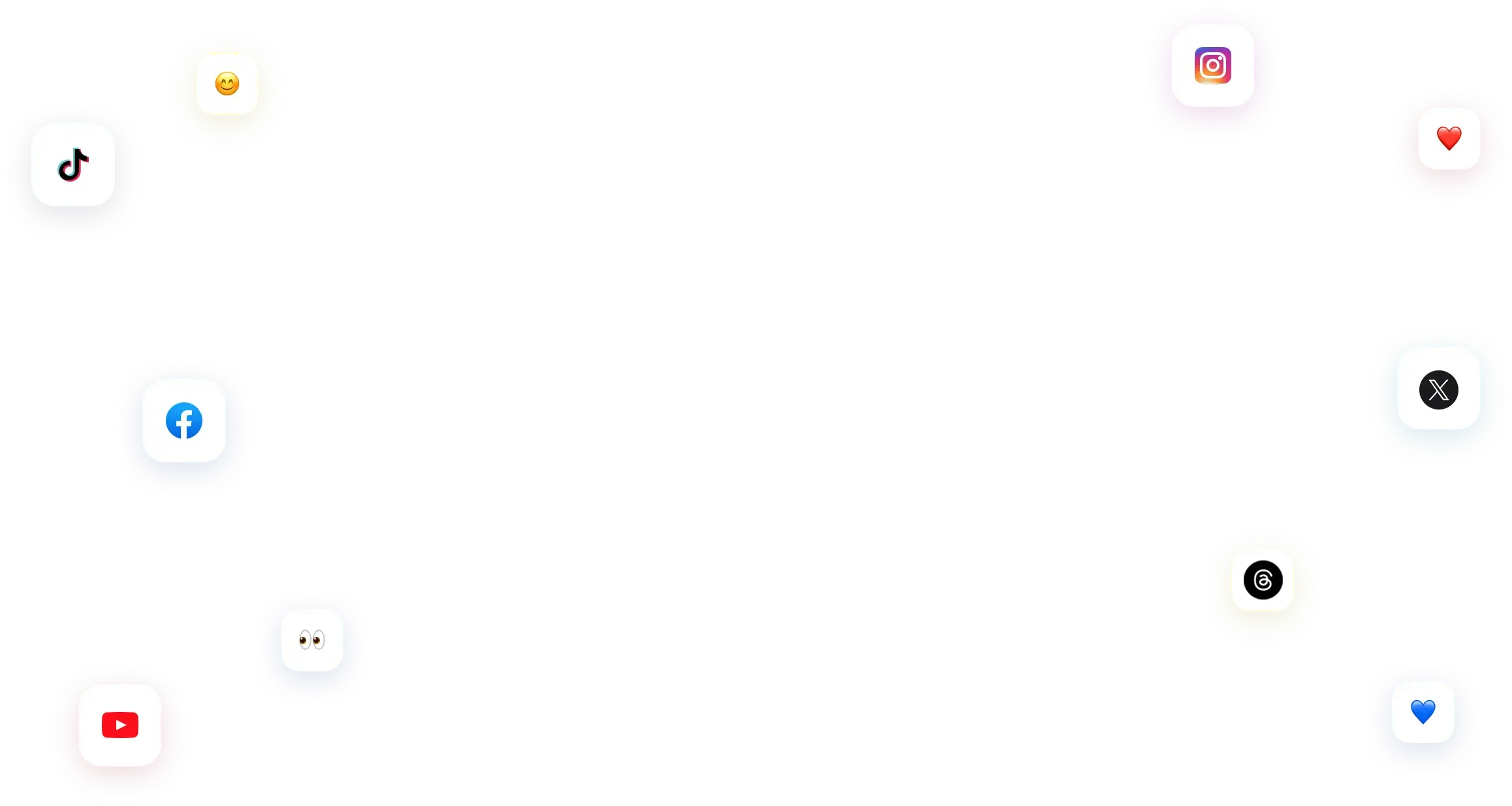
You have many things to do.
Let us help you with social media.
Use our free plan to build momentum for your social media presence.
Or skip ahead and try our paid plan to scale your social media efforts.
P.S. It will be a piece of cake 🍰 with Vista Social
Subscribe to our Newsletter!
To stay updated on the latest and greatest Social Media news. We promise not to spam you!
